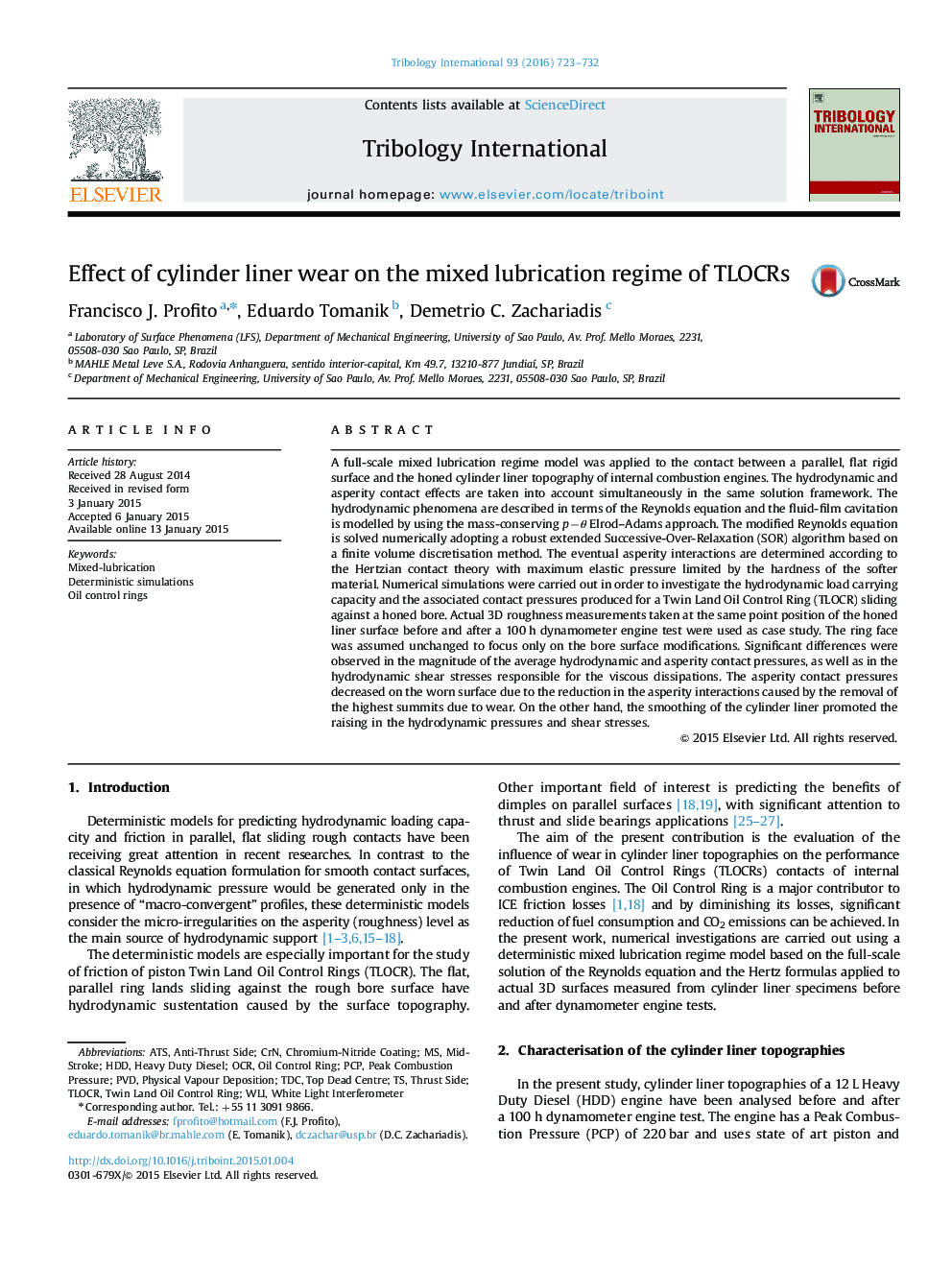| Article ID | Journal | Published Year | Pages | File Type |
|---|---|---|---|---|
| 614242 | Tribology International | 2016 | 10 Pages |
Abstract
A full-scale mixed lubrication regime model was applied to the contact between a parallel, flat rigid surface and the honed cylinder liner topography of internal combustion engines. The hydrodynamic and asperity contact effects are taken into account simultaneously in the same solution framework. The hydrodynamic phenomena are described in terms of the Reynolds equation and the fluid-film cavitation is modelled by using the mass-conserving pâθ Elrod-Adams approach. The modified Reynolds equation is solved numerically adopting a robust extended Successive-Over-Relaxation (SOR) algorithm based on a finite volume discretisation method. The eventual asperity interactions are determined according to the Hertzian contact theory with maximum elastic pressure limited by the hardness of the softer material. Numerical simulations were carried out in order to investigate the hydrodynamic load carrying capacity and the associated contact pressures produced for a Twin Land Oil Control Ring (TLOCR) sliding against a honed bore. Actual 3D roughness measurements taken at the same point position of the honed liner surface before and after a 100 h dynamometer engine test were used as case study. The ring face was assumed unchanged to focus only on the bore surface modifications. Significant differences were observed in the magnitude of the average hydrodynamic and asperity contact pressures, as well as in the hydrodynamic shear stresses responsible for the viscous dissipations. The asperity contact pressures decreased on the worn surface due to the reduction in the asperity interactions caused by the removal of the highest summits due to wear. On the other hand, the smoothing of the cylinder liner promoted the raising in the hydrodynamic pressures and shear stresses.
Keywords
Related Topics
Physical Sciences and Engineering
Chemical Engineering
Colloid and Surface Chemistry
Authors
Francisco J. Profito, Eduardo Tomanik, Demetrio C. Zachariadis,
